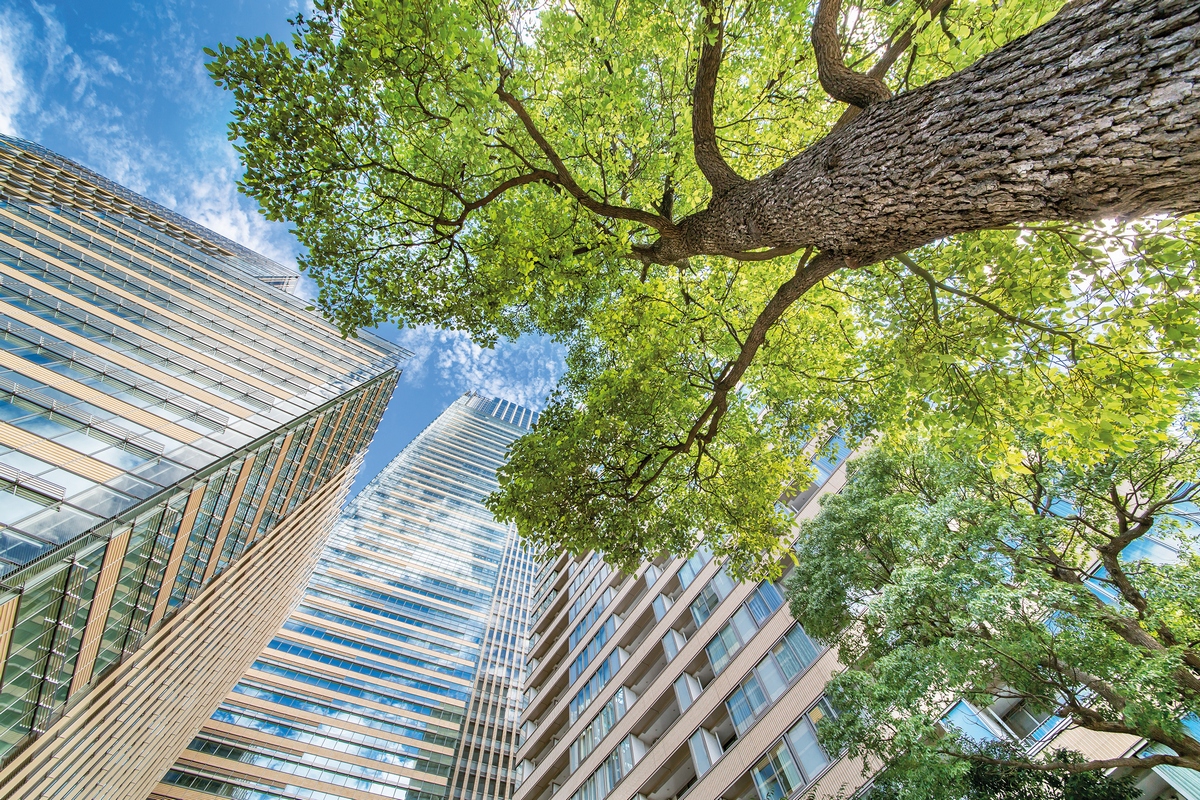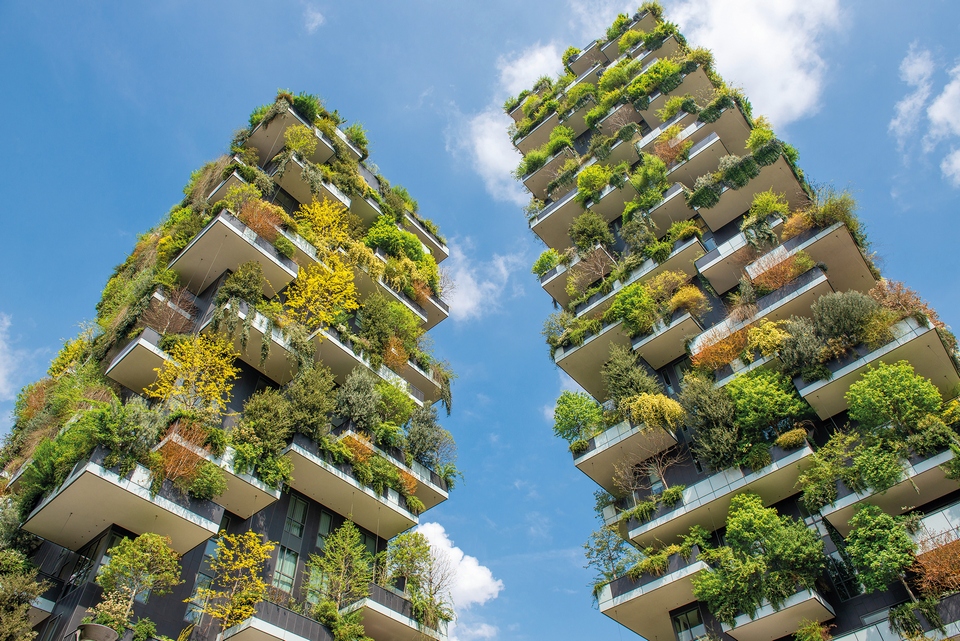Living in cities polluted beyond all acceptable limits, consuming food grown in unhealthy and toxic soil, noise, excessive heating and visual pollution from advertisements are the reasons to focus more on alternative solutions / by Dragan Nikolić /

At a time when we are witnessing dangerous climate changes on a global level and the destruction of the environment, and cultural and historical heritage, we can only worry about our own future.
Providing that the human race survived, earlier generations were afraid that their grandchildren would live in a post-apocalyptic, dystopian society. Then the fear shifted to our children, and as our lives drift away on an imaginary timeline, that fear becomes existential and personal.
Living in cities polluted beyond all acceptable limits, consuming food grown in unhealthy and toxic soil, noise, excessive heating and visual pollution from advertisements are the reasons to focus more on alternative solutions. Few people, however, deal with this issue on a general, social or global level, which indicates the deep selfishness of modern society.
There is a trend of returning to the countryside and nature itself, albeit modestly and shyly, but apart from the living location, nothing fundamentally changes. We, as a society, are left with the vicious habits of unhealthy living and continuing to live ‘the old way’, in a huge disagreement with the nature of which we should be a part.
For decades, profit came first and people and nature were seen as ordinary resources to be used regardless of the consequences
As today’s society is based on digitalization, the influence of social networks and media has grown so much that everything comes down to blindly following trends and fashionable attitudes. Fortunately, one of these is the attitude about the need for a healthy environment and slowing down the phenomenon of global warming. It has become popular, especially among young people, to highlight some new values, including green construction, and aside from the fact that this might be just a fad, it should be welcomed.
The harsh neoliberal system has learned to adapt to trends in order to survive, so today we are witnessing an interesting shift in business goals. An increasing number of companies underline that they are socially responsible, that they care about the well-being of their employees and protect the environment. Investments in these areas are growing year on year, and innovations are coming more into focus.
The construction industry is the basis of every economy because it creates the infrastructure necessary for both people’s lives and business activities. For decades, profit came first and people and nature were seen as ordinary resources to be used regardless of the consequences. That is why today we have dead rivers, polluted air, a large number of diseases among the working-age population, and a socially stratified society. All of this will not come to an end quickly and easily, but changing the behaviour of large corporations, including those in the construction industry, is a necessary first step towards a general change in society and the initiation of a new, more humane and naturally oriented value system.
Green construction implies growing awareness that resources are important to us, but also a return to some basic construction principles, as they were once upon a time when construction benefitted the whole community, not just individuals and their bank accounts.
Once upon a time, people built houses in a way that considered the natural environment and laws in every sense
Once upon a time, people built houses in a way that considered the natural environment and laws in every sense. Care was taken to build houses from functional and natural materials, available in the immediate surroundings. That is why the houses on the coast are made of stone, and the houses on the mountains are made of wood. Attention was also paid to the climate, winds, precipitation, solar insolation, as well as the needs of the housemates themselves. The construction industry is again pursuing these principles because they have proven to be the most cost-effective in the long run and enable sustainable development. That is its essence today – sustainability in every sense, which implies the preservation of natural resources, the good health of the population and creating a future for the development of the entire community with steps that will not harm it later on.
Science has shown that buildings and the construction industry are the largest single source of global warming. They consume almost three-quarters of electricity and generate about 40 percent of carbon dioxide. This segment also consumes 14 percent of drinking water and generates every third kilogramme of non-recyclable waste. These are terrible data that indicate the harmfulness of the modern construction industry, and an even bigger problem is that few people are aware of it.
These problems are solvable and just require basic knowledge and a little good will. If we applied what science says, then our houses and buildings would be much healthier and more economical, that is, they would be more in harmony with nature and would provide us with the opportunity to exist for several decades.
It all starts with picking the good building material. Proper insulation of buildings with the use of stone or glass wool contributes to lower energy consumption for cooling and heating and prevents fire damage. The installation of high-quality, multi-chamber PVC doors and windows will bring great savings to the tenants themselves, especially during the winter months when there should be no waste of energy for heating. Connecting a large number of housing units to central heating systems that use renewable energy sources, e.g. biomass, significantly contributes to savings in the objects themselves, but also local administration systems. Last but not least, this kind of build protects our environment. Remember the winter months in Belgrade when it is impossible to breathe because of residents using heating stoves and the increased emission of dangerous substances into the air?
Unfortunately, there is still a predominant belief in our country that green construction is expensive and unprofitable. Neither of those two is correct. The advantages of green construction are multiple and their value cannot be expressed in money because it promotes the quality of life, creates prerequisites for the better health of the population and provides us with much-needed hope for the survival of humanity.
Initial investments in such construction can be more expensive, but today there are more and more funds that support the implementation of new construction technologies. The town of Šabac in Serbia is a good example of this, which, with the help of the European Union, has been co-financing insulation projects for both individual and collective residential buildings for years, has opened biomass power plants, built state-of-the-art waste sorting facilities, and is the only city in Serbia to have a wastewater filtering plant.
Late last year, a green construction conference was held in Serbia, at which it was concluded that the overall situation is unsatisfactory, that is, that green construction has not yet grown roots in our country. Serbia has regulations according to which every new project must have the so-called energy passport. The number of such buildings does not exceed 10,000 at the moment, which is very small considering that the total construction fund is measured in millions.
